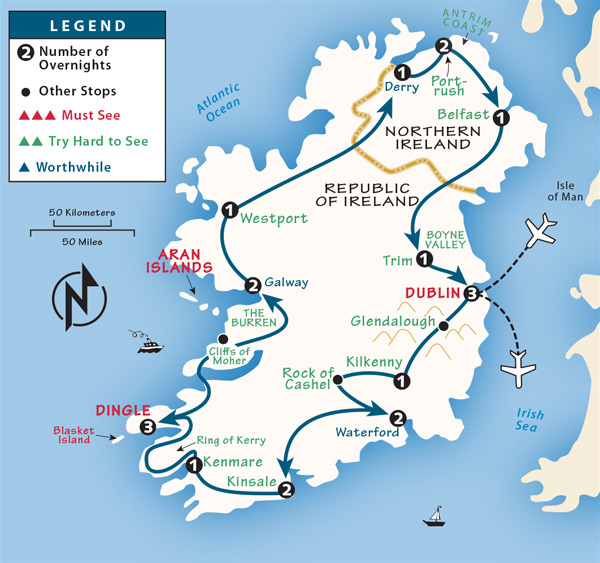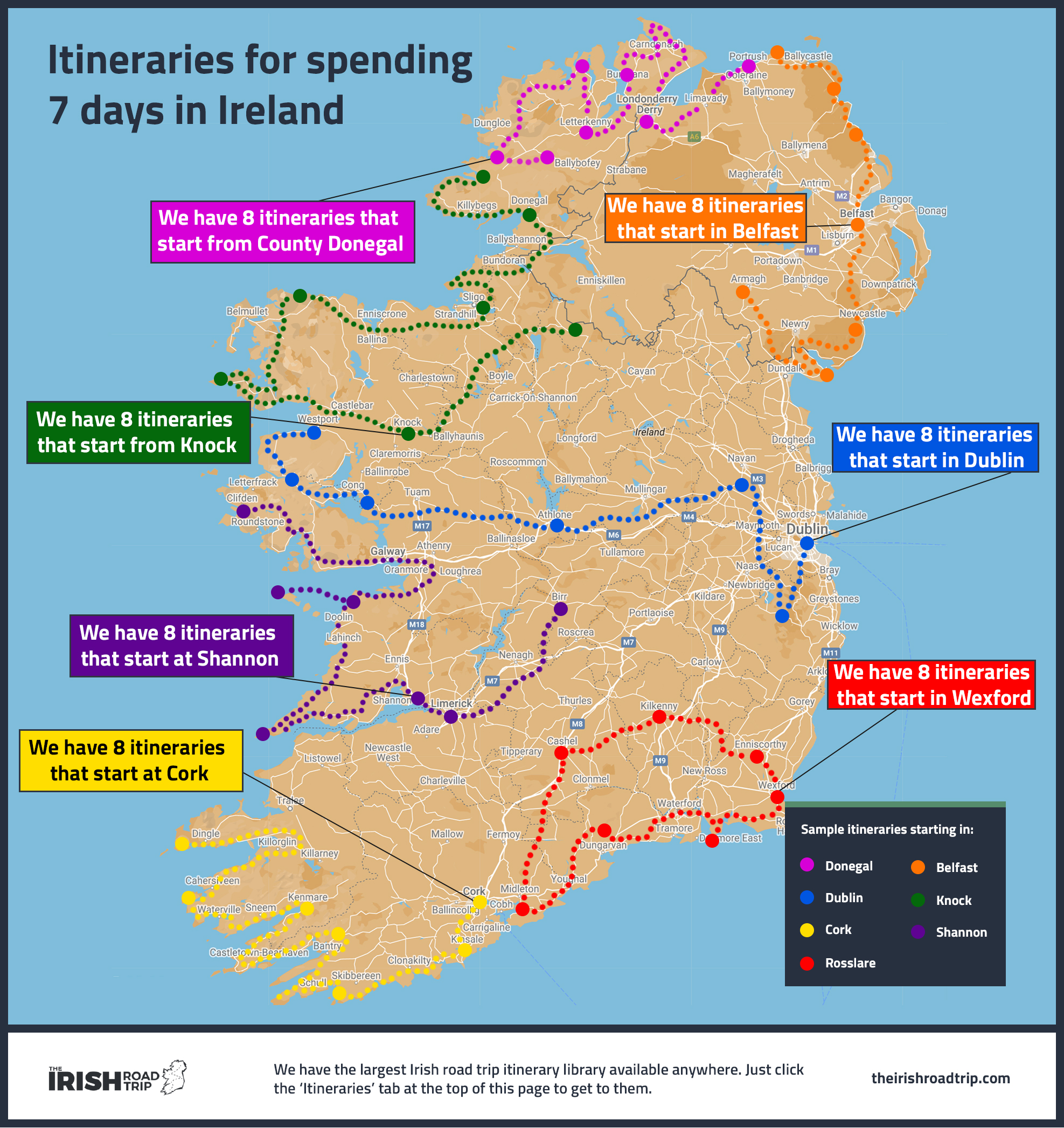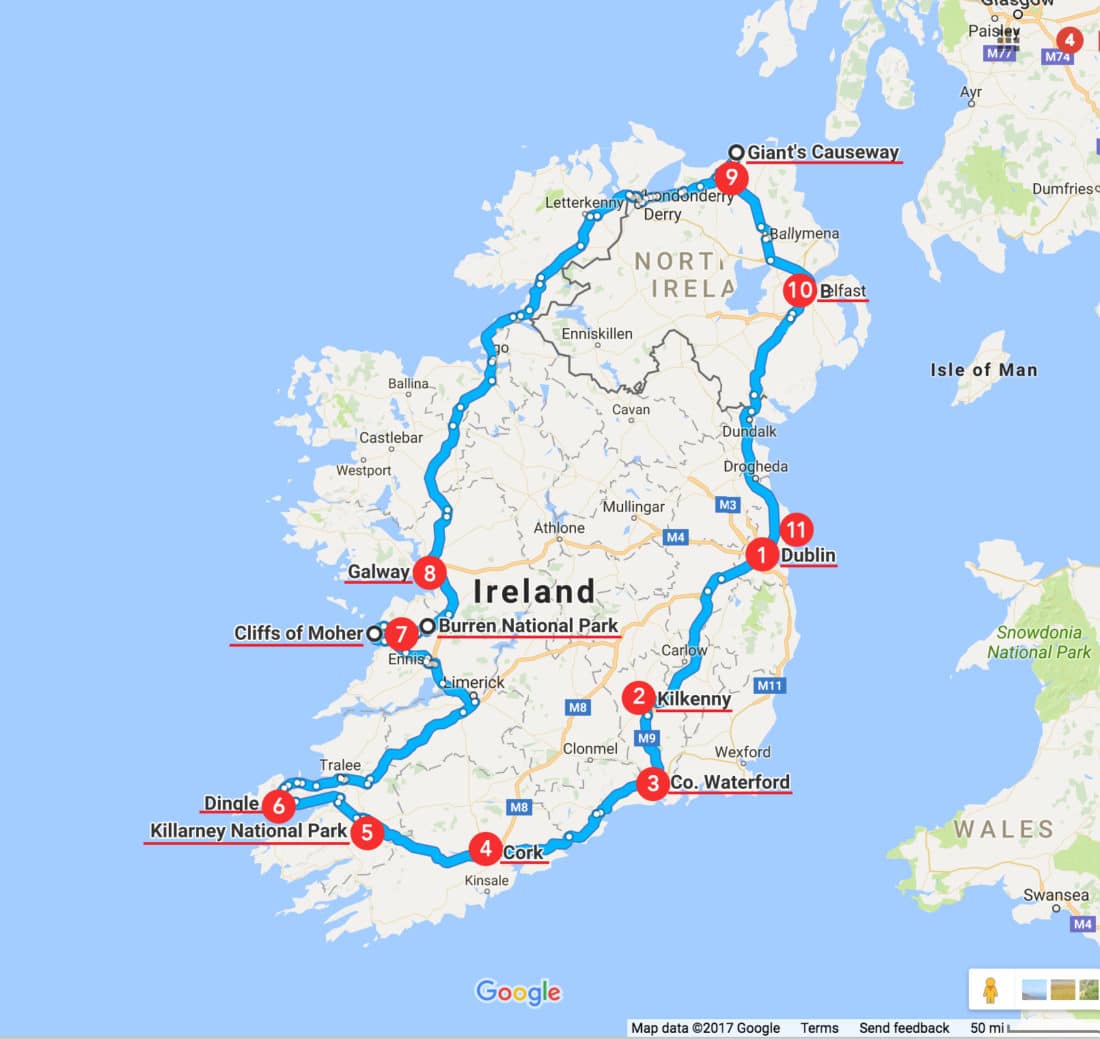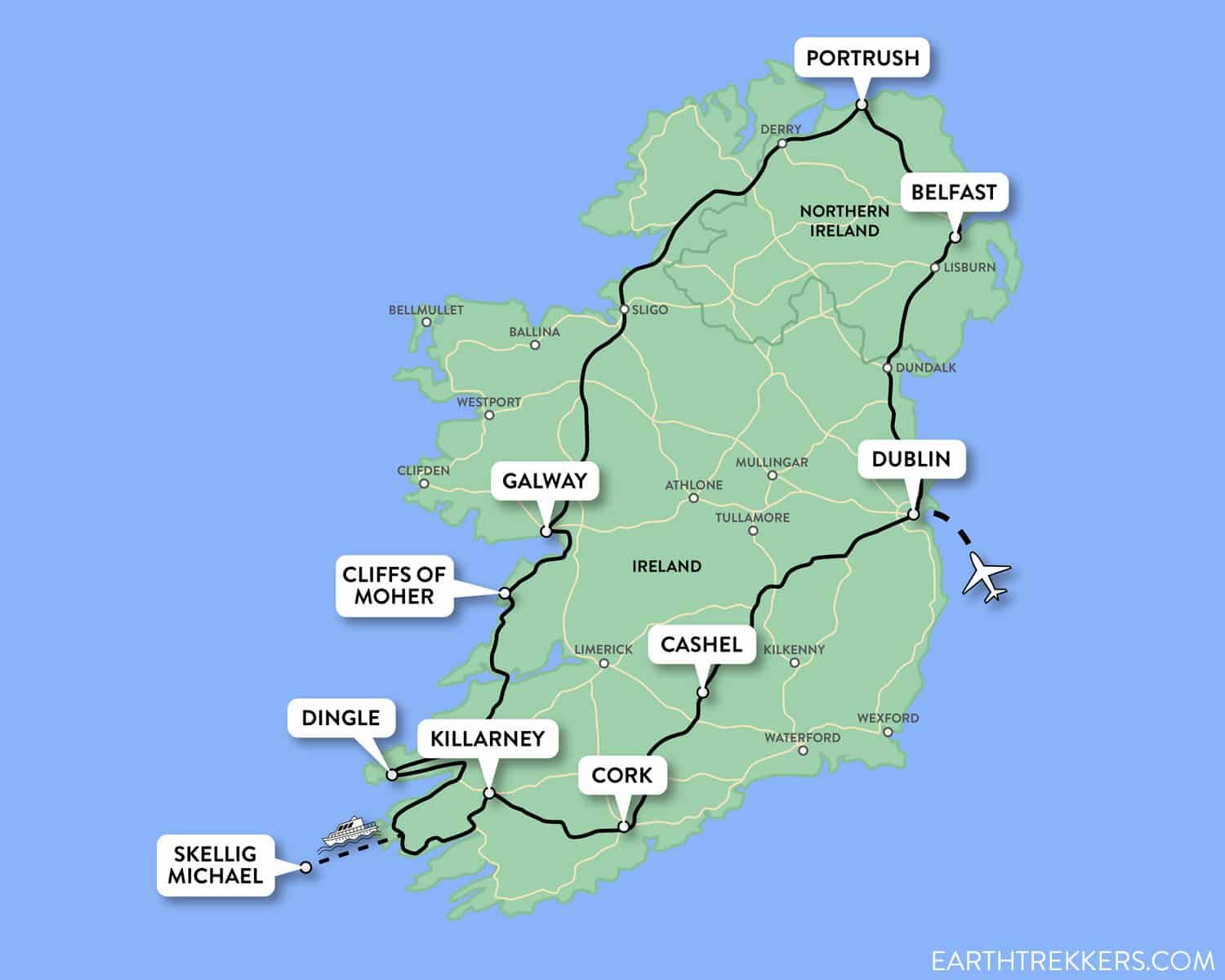Table of Contents
- Day 1: Arrival in Dublin
- Day 2: Exploring Dublin
- Day 3: Dublin to Galway
- Day 4: The Cliffs of Moher
- Day 5: Killarney National Park
- Day 6: Ring of Kerry
- Day 7: Dingle Peninsula
- Day 8: Cork and Blarney Castle
- Day 9: Waterford and Kilkenny
- Day 10: Departure
- Travel Tips for Ireland
- Destination Highlights
- Pros and Cons of Travel in Ireland
- FAQs About Traveling in Ireland
Day 1: Arrival in Dublin
Welcome to Ireland! After arriving in Dublin, the vibrant capital city, I was instantly captivated by its mix of modernity and history. I checked into my hotel and got ready to explore. If you arrive in the early afternoon, you’ll have plenty of time to start soaking in the local culture.
Day 2: Exploring Dublin
Top Attractions to Visit
- Trinity College and the Book of Kells: A must-see for any history buff.
- Dublin Castle: Offers a glimpse into Ireland’s history and politics.
- Guinness Storehouse: Learn about the brewing process and enjoy a pint with a view.
As I strolled through St. Stephen’s Green, I couldn’t help but admire the blooming flowers and the locals enjoying their day. Be sure to stop by a traditional pub for dinner.
Day 3: Dublin to Galway
Getting There
Take a train from Dublin to Galway; it’s a comfortable ride of about 2.5 hours. As the countryside zipped by, I couldn’t help but feel excited about my next adventure.
Galway Highlights
- Quay Street: A lively area full of shops and restaurants.
- Spanish Arch: A beautiful spot to take photos and reflect.
Don’t forget to try some local seafood; the freshness is unmatched!
Day 4: The Cliffs of Moher
Travel Tips
Take a day trip from Galway to the Cliffs of Moher. I booked a guided tour, which made the experience seamless. Standing at the edge of the cliffs, with the wind in my hair and the Atlantic Ocean crashing below, was an unforgettable moment.

Day 5: Killarney National Park
After visiting the Cliffs, I headed south to Killarney National Park. The scenery here is stunning, featuring mountains, lakes, and majestic forests.
Activities to Enjoy
- Biking: Rent a bike and explore the park.
- Boat Trip: A ride on the lake provides a unique perspective on the surrounding beauty.
Day 6: Ring of Kerry
Driving the Ring
The Ring of Kerry is a famous scenic drive. I left early to avoid traffic, and the views were breathtaking. From mountains to ocean vistas, each turn brought a new marvel.
Must-Stop Locations
- Ladies View: A picturesque spot that showcases the beauty of the region.
- Skellig Michael: If time permits, this UNESCO site is worth a visit.

Day 7: Dingle Peninsula
Explore the Peninsula
The Dingle Peninsula is known for its rugged beauty and charming villages. I spent the day hiking and taking in the dramatic cliffs.
Local Delicacies
Don’t miss the chance to try the local seafood chowder in one of the pubs.
Day 8: Cork and Blarney Castle
A Must-See Attraction
After a drive to Cork, my first stop was Blarney Castle. Kissing the Blarney Stone is a fun tradition, and the gardens surrounding the castle are just beautiful to explore.

Day 9: Waterford and Kilkenny
History Awaits
Waterford, known for its crystal, is a great stop before heading to Kilkenny, where I visited Kilkenny Castle and its lovely grounds.
Day 10: Departure
As my trip came to an end, I took a final stroll through Dublin, reflecting on the many amazing experiences I had in Ireland. I couldn’t wait to return to this beautiful country.

Travel Tips for Ireland
- Weather Preparedness: Ireland’s weather can be unpredictable. Always carry a rain jacket!
- Currency: The Euro is used in most of Ireland, but Northern Ireland uses the Pound Sterling.
- Driving: If planning to drive, remember to keep to the left side of the road.
- Public Transport: Bus services and trains are reliable and easy to navigate.
Destination Highlights
Cultural Experiences
From traditional music in pubs to vibrant festivals, there’s always something happening in Ireland.
Natural Wonders
With cliffs, lakes, and mountains, the natural beauty is stunning and worth exploring from every angle.

Pros and Cons of Travel in Ireland
Pros
- Rich history and culture
- Stunning landscapes
- Friendly locals
Cons
- Weather can be unpredictable
- Costs can add up in tourist areas
- Some rural areas are less accessible
FAQs About Traveling in Ireland
What is the best time to visit Ireland?
The best time to visit is from late spring (May) to early autumn (September) when the weather is milder.
Do I need a visa to visit Ireland?
Visa requirements vary depending on your nationality; check the official government website for details.
How can I get around Ireland?
You can rent a car, use public transport, or join guided tours to explore the country more conveniently.